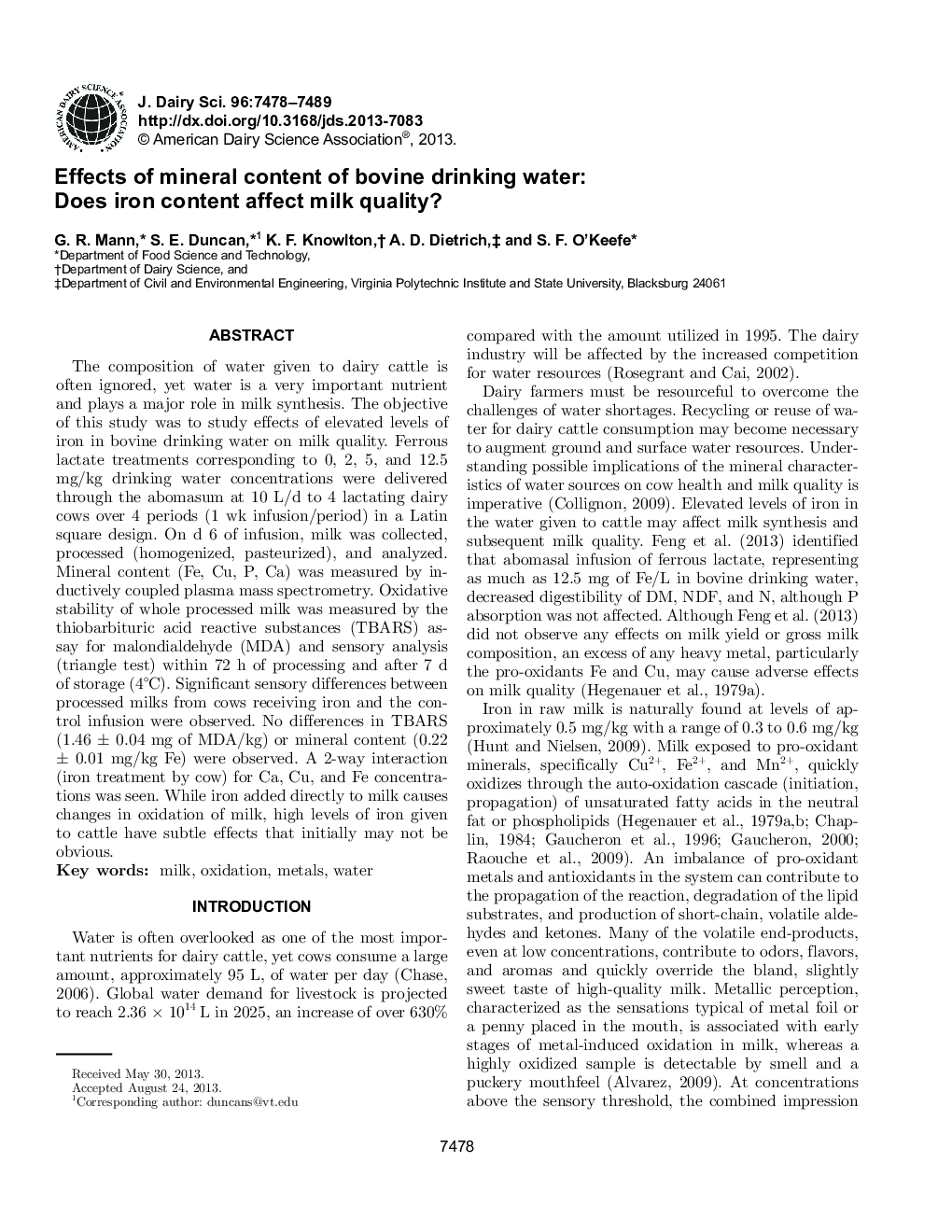| Article ID | Journal | Published Year | Pages | File Type |
|---|---|---|---|---|
| 10977239 | Journal of Dairy Science | 2013 | 12 Pages |
Abstract
The composition of water given to dairy cattle is often ignored, yet water is a very important nutrient and plays a major role in milk synthesis. The objective of this study was to study effects of elevated levels of iron in bovine drinking water on milk quality. Ferrous lactate treatments corresponding to 0, 2, 5, and 12.5 mg/kg drinking water concentrations were delivered through the abomasum at 10 L/d to 4 lactating dairy cows over 4 periods (1 wk infusion/period) in a Latin square design. On d 6 of infusion, milk was collected, processed (homogenized, pasteurized), and analyzed. Mineral content (Fe, Cu, P, Ca) was measured by inductively coupled plasma mass spectrometry. Oxidative stability of whole processed milk was measured by the thiobarbituric acid reactive substances (TBARS) assay for malondialdehyde (MDA) and sensory analysis (triangle test) within 72 h of processing and after 7 d of storage (4°C). Significant sensory differences between processed milks from cows receiving iron and the control infusion were observed. No differences in TBARS (1.46 ± 0.04 mg of MDA/kg) or mineral content (0.22 ± 0.01 mg/kg Fe) were observed. A 2-way interaction (iron treatment by cow) for Ca, Cu, and Fe concentrations was seen. While iron added directly to milk causes changes in oxidation of milk, high levels of iron given to cattle have subtle effects that initially may not be obvious.
Related Topics
Life Sciences
Agricultural and Biological Sciences
Animal Science and Zoology
Authors
G.R. Mann, S.E. Duncan, K.F. Knowlton, A.D. Dietrich, S.F. O'Keefe,
